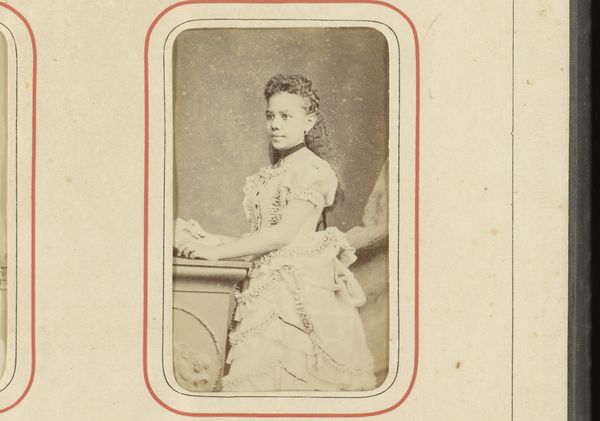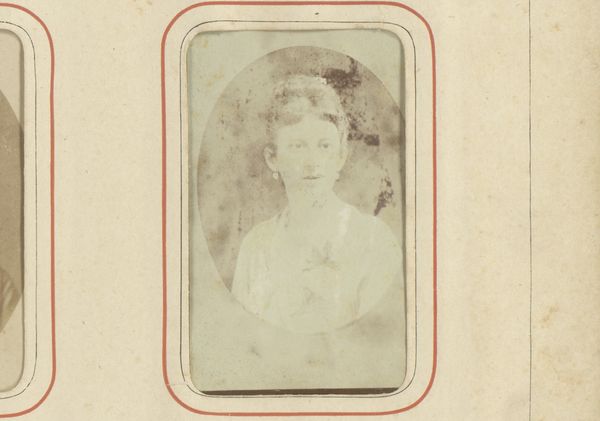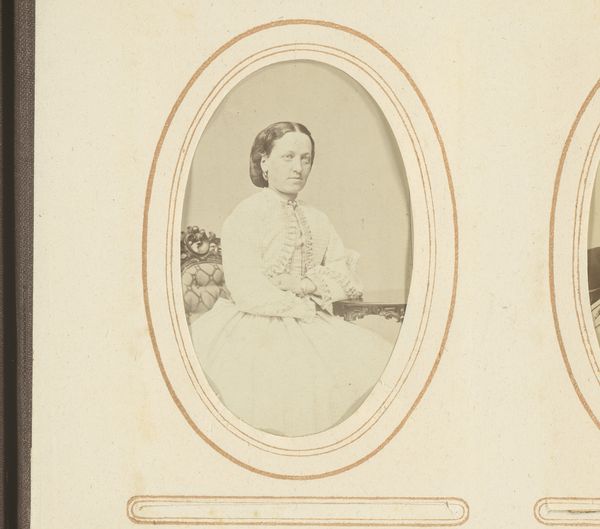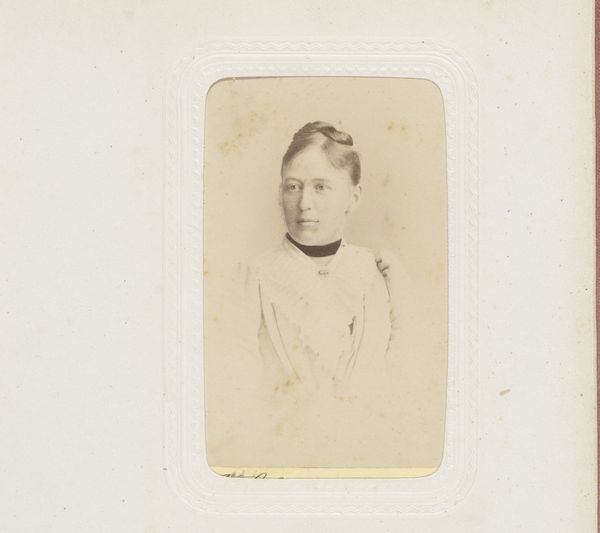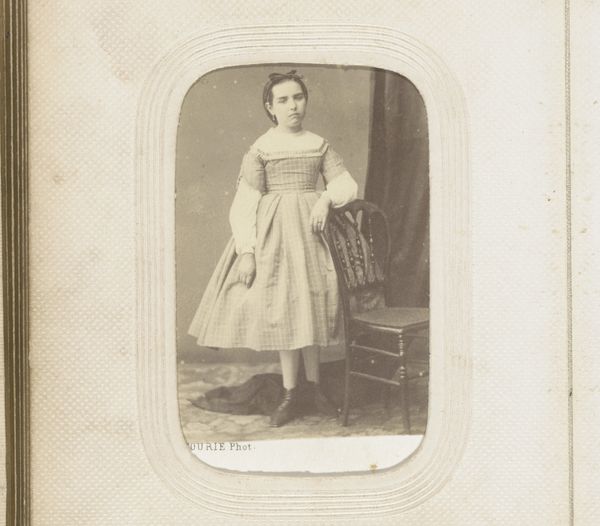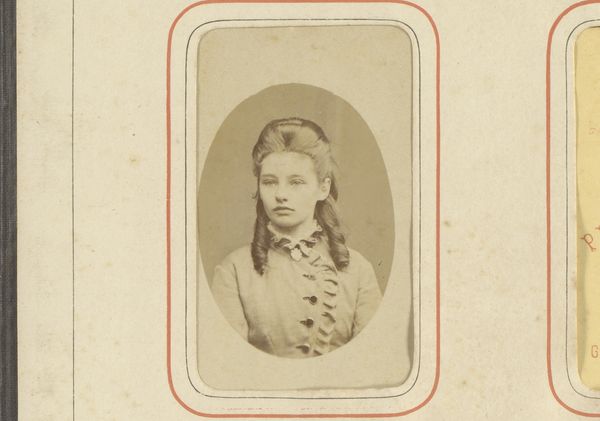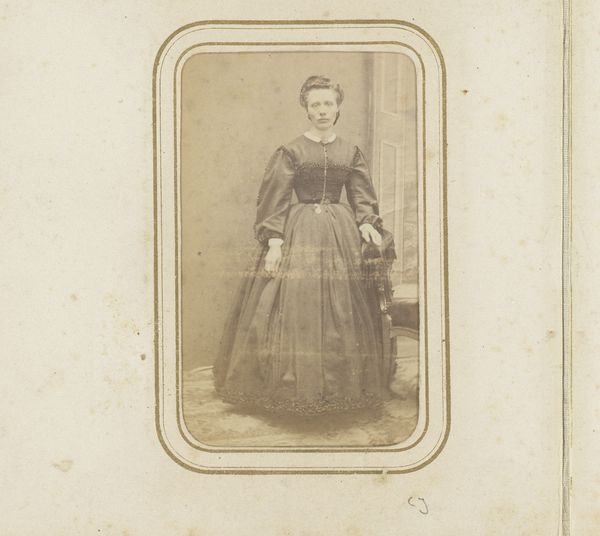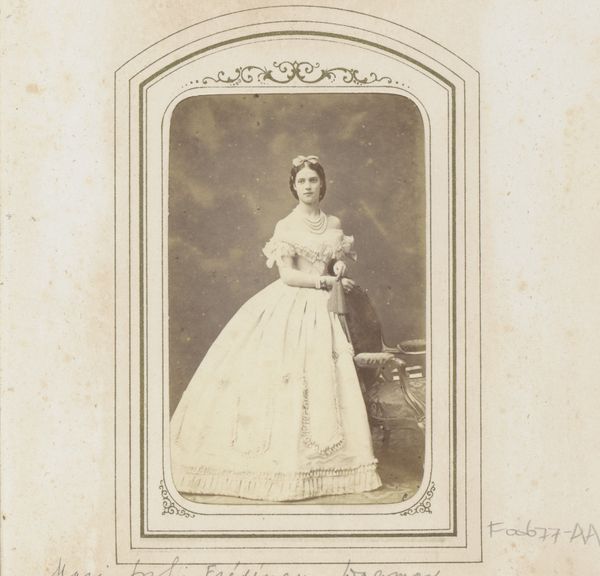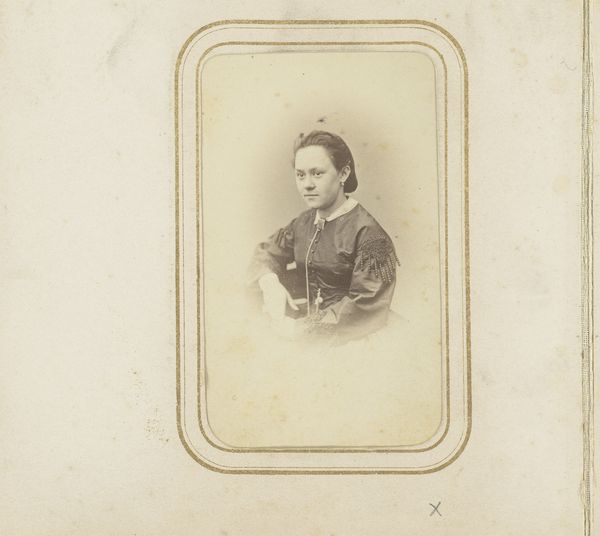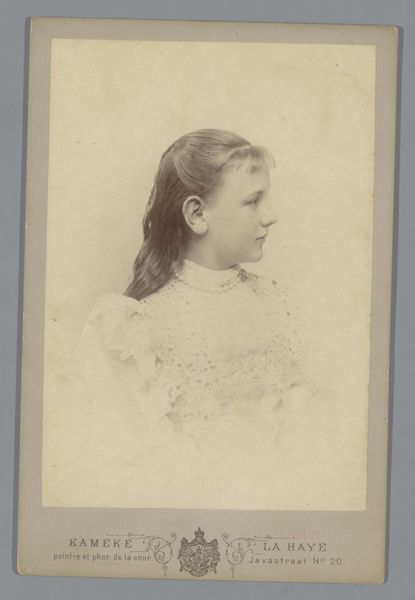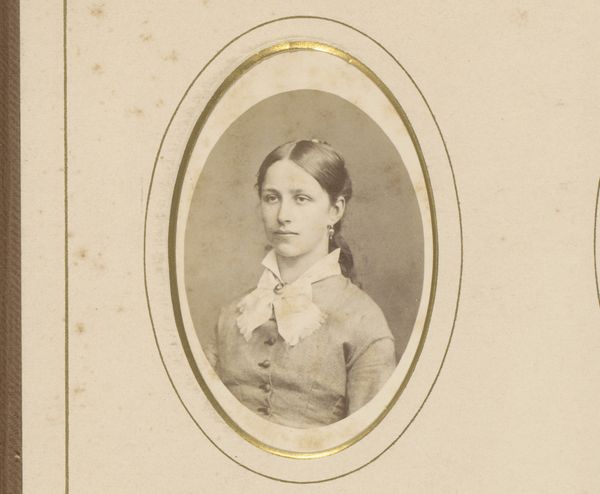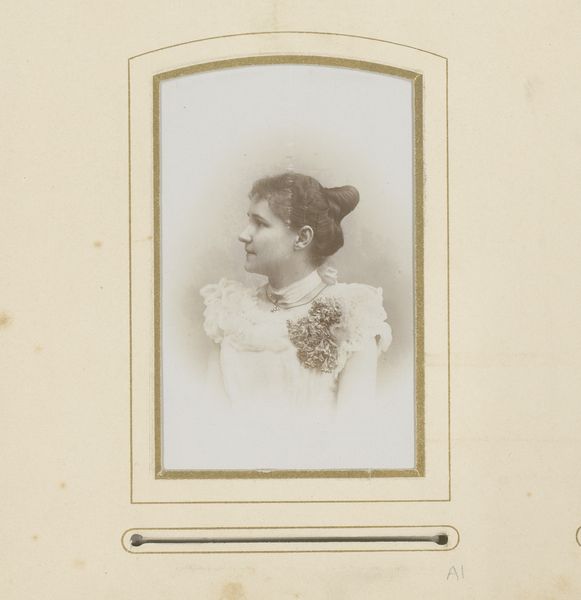
photography, albumen-print
#
portrait
#
photography
#
19th century
#
genre-painting
#
albumen-print
Dimensions: height 103 mm, width 64 mm
Copyright: Rijks Museum: Open Domain
Curator: Welcome. We’re standing before an albumen print by Woodbury & Page, entitled "Portret van een onbekend meisje," or "Portrait of an Unknown Girl," created sometime between 1870 and 1890. Editor: My initial impression is one of fragility, even innocence. The young woman's delicate white dress and slender build evoke a sense of Victorian girlhood and perhaps a melancholic air. Curator: It's fascinating to consider the albumen print process here. It’s paper coated with egg white and silver salts. The production required specific resources and technical skill. Editor: And consider the cross she wears; it immediately situates her within a particular religious and social context. What kind of beliefs, hopes, and expectations are communicated with that potent, age-old symbol? Curator: Precisely. The consumption of photographs exploded during this era; it enabled a democratization of portraiture to those who could pay for it, capturing middle-class subjects that never could've afforded a painting. Woodbury & Page operated across what was formerly the Dutch East Indies and are one example of Western photographic enterprise impacting diverse cultures during this period. Editor: Looking closer, her direct gaze is remarkable. In portraiture, that open gaze implies an implicit psychological power struggle between the subject and the viewer—or photographer—about revealing or concealing. And her hand resting on the chair's back is a compositional element with the visual strength to connect her even more with this prop. Curator: I agree. The material circumstances surrounding her photograph’s creation become intertwined with issues of labor, consumption, and technological progress in the latter half of the nineteenth century. These images weren't made for an individual's gaze. But to solidify someone’s personal image of the family inside these specific historical changes, especially for diasporic and colonised peoples in these colonies. Editor: This portrait makes you wonder about the narratives and myths embedded in everyday material culture like a studio photo, which is capable of encapsulating social memory within tangible objects. We carry on similar traditions today. Curator: True, by examining the resources involved and labor that went into creating her portrait, we get insights into this unknown girl’s social circumstances. Editor: Yes, her serene face serves as a constant beacon, even as history itself has obscured other parts of her individual reality.
Comments
No comments
Be the first to comment and join the conversation on the ultimate creative platform.
